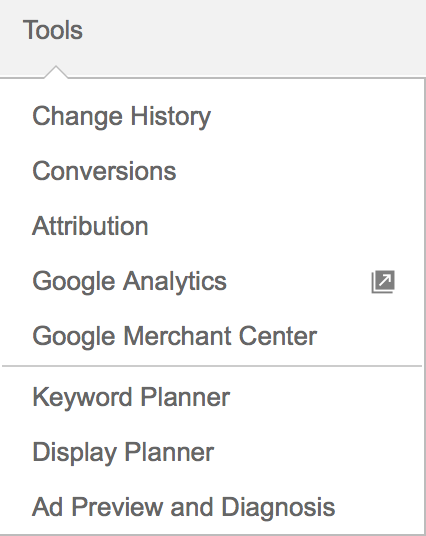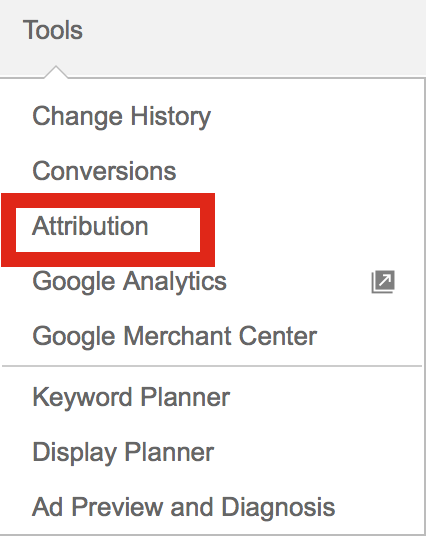Making The Case for Attribution: Prove The Entire Value Of PPC To Your Stakeholders

My Google rep recently shared a study with me that stated people spend an average of 5 hours per day online and visit over 10 different sources before converting. For instance, potential customers in my PPC accounts are spending ever-increasing amounts of time on social media platforms such as Facebook and Twitter and review sites like Yelp. They’re researching and discussing potential purchase options with others before finally converting. In short, consumers are spending more time than ever online and taking a longer time pondering the decision of whether or not to convert.
All of this ‘platform bouncing’ as I like to call it creates a problem on a macro level for advertisers from a performance measurement perspective. Customers will not convert from every source. From a direct measurement standpoint, this can lead to making a decision to pause ads on those platforms for under performance. However, by pausing, a secondary problem is created because those sources could be playing an assisting role by leading to conversions through another PPC source or an entirely different digital marketing channel.
Failure to account for this dynamic leads to under optimizing and creating an inability to harness the full power of PPC. This very problem also repeats itself on a micro level by pausing keywords that fail to perform from a direct conversion standpoint. Those ‘non-converting’ keywords could be playing an assisting role in terms of other keywords converting in different areas of your PPC account.
The solution to overcoming this problem is implementing attribution modeling. Attribution modeling helps advertisers better assess overall performance by understanding not only the areas of our accounts that are directly converting but also what areas of our accounts are assisting in those conversions taking place.
Now lets’ discuss how we can:
- Make a case to our key stakeholders to adopt attribution modeling
- Determine measurement tactics
- Use the information from attribution modeling to improve our PPC Program
Making The Case For Adopting Attribution
Let’s put ourselves in our key stakeholder’s shoes. If I was either a marketing manager or CMO, I need to justify every dollar of PPC spend by proving sufficient return on investment. If I can’t prove the dollars I’m investing are producing sufficient return, I’m going to lose my PPC spend to other channels. If I don’t want to lose my PPC marketing dollars I need to prove not only direct value (meeting revenue, profit, ROAS, or other cost per acquisition goals), but I also need to prove indirect value.
So what is indirect value and how can we measure it? One example of showing indirect value is whether or not PPC is leading to conversion through other channels. For instance, is PPC traffic leading to conversion through email or SEO? Knowing and understanding this information can be the difference between having money stripped from PPC to fund other initiatives and further funding PPC.
Ways To Measure Attribution
Attribution should be measured on both the micro and the macro level. As stated above, we need to understand within our paid search accounts the how keywords, campaigns, etc. interplay with assisting in the conversion of other areas of an account.
Google Analytics can be used to measure attribution. So long as GA and Adwords are linked together you have the ability to measure PPC attribution. Additionally, attribution is recorded directly in your AdWords account. It can be accessed by clicking ‘tools’ on top right of the screen and selecting ‘attribution from the drop down menu.’

Some key ways to measure attribution include:
- Multi-Channel Funnels (MCF): The multi-channel funnels report in Google Analytics shows how your marketing channels interplay with each other. Use this report to guide your investment amongst your various channels.
- Measuring Assisted Conversions: This data resides directly in the Google Adwords account in addition to GA. Using this report can help understand how a keyword/campaign/ad group assists with generating conversions. I use the assisted conversion data provided to me to justify whether or not I keep a keyword active or if I pause it. Below is an example of an assisted conversions report.
- Top Paths Report: Top Paths visualizes the path to conversion within your AdWords account. You can see how customers are searching and the combinations of queries they use that get them to arrive at the bottom of the funnel. Use this report directionally to better understand what keywords to keep buying and how aggressively you want to bid.
What I referenced above is just a broad highlight of the types of attribution data available for analysis. In addition to Google Analytics, there are other solutions on the market such as C3 metrics or Visual IQ that have robust attribution modeling platforms that deep dive into your entire digital marketing program and uses complex algorithms to determine the true value of all your channels. Understanding the needs of your business will help you best decide what metrics make the most sense to track and take action.
How Do We Use Attribution Data To Our Advantage?
The easy part of attribution is collecting the data. Unfortunately, the hard part is figuring out what it all means and how to take action based on what we’ve learned. I’ve created two hypothetical situations that can provide guidance on how to turn attribution-modeling data into concrete action that leads to account growth.
Advertiser A heavily invests in both display and search. The display campaigns generate a lot of traffic but have low conversion volume and a high CPA. The logical conclusion to draw is that display doesn’t drive enough conversions at an efficient enough CPA to justify the investment in this channel. However, based on attribution data you discover that display is directly leading to increased conversions from search. In this scenario, attribution is telling us that display is creating a lift in search-based conversions, which creates a very compelling case to increase rather than decrease your display investment.
Advertiser B is in the process of developing their remarketing strategy. Attribution modeling reveals a 15-day conversion lag. This data has a direct impact on how the remarketing strategy is developed. For instance, if most conversions happen within a few days of clicking an ad, the remarketing lists and ad copy created will be vastly different than what our lists and copy would be if the time lag to conversion is longer and the prospect has to be further nurtured.
Attribution is only useful if it’s used to inform strategy and tactics. The examples above show how it’s possible to take the raw data we collect and turn it into actionable plans that allow us to move our PPC forward.
Conclusion
The key to a successful paid search program is to understand the interplay between sources, devices, and how a keyword that does not directly lead to a conversion indirectly impacts the conversion process in a positive way. Initiating attribution modeling into your workflow can help measure and analyze this interplay as it occurs and to help prove the full value of your PPC program to key stakeholders.






